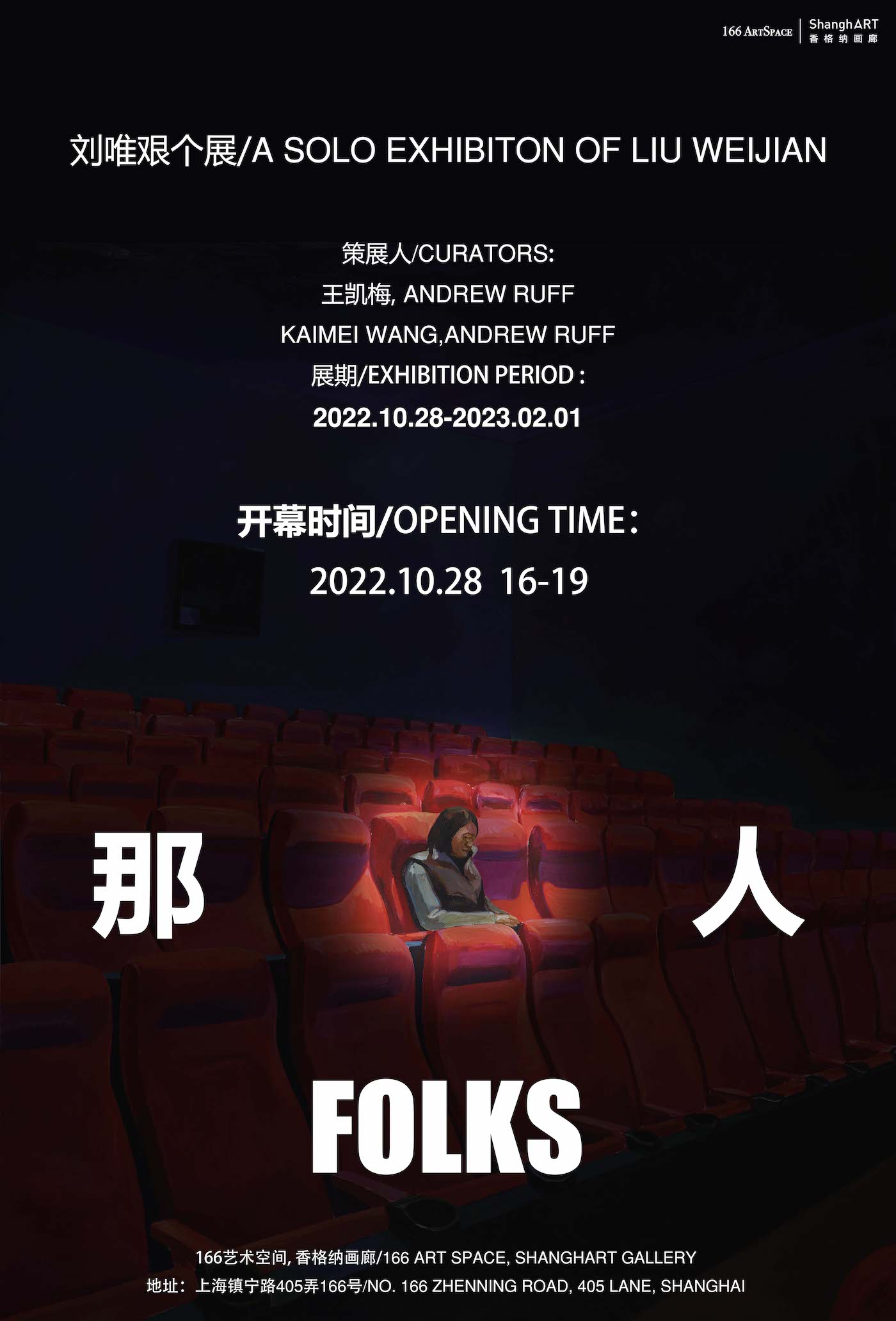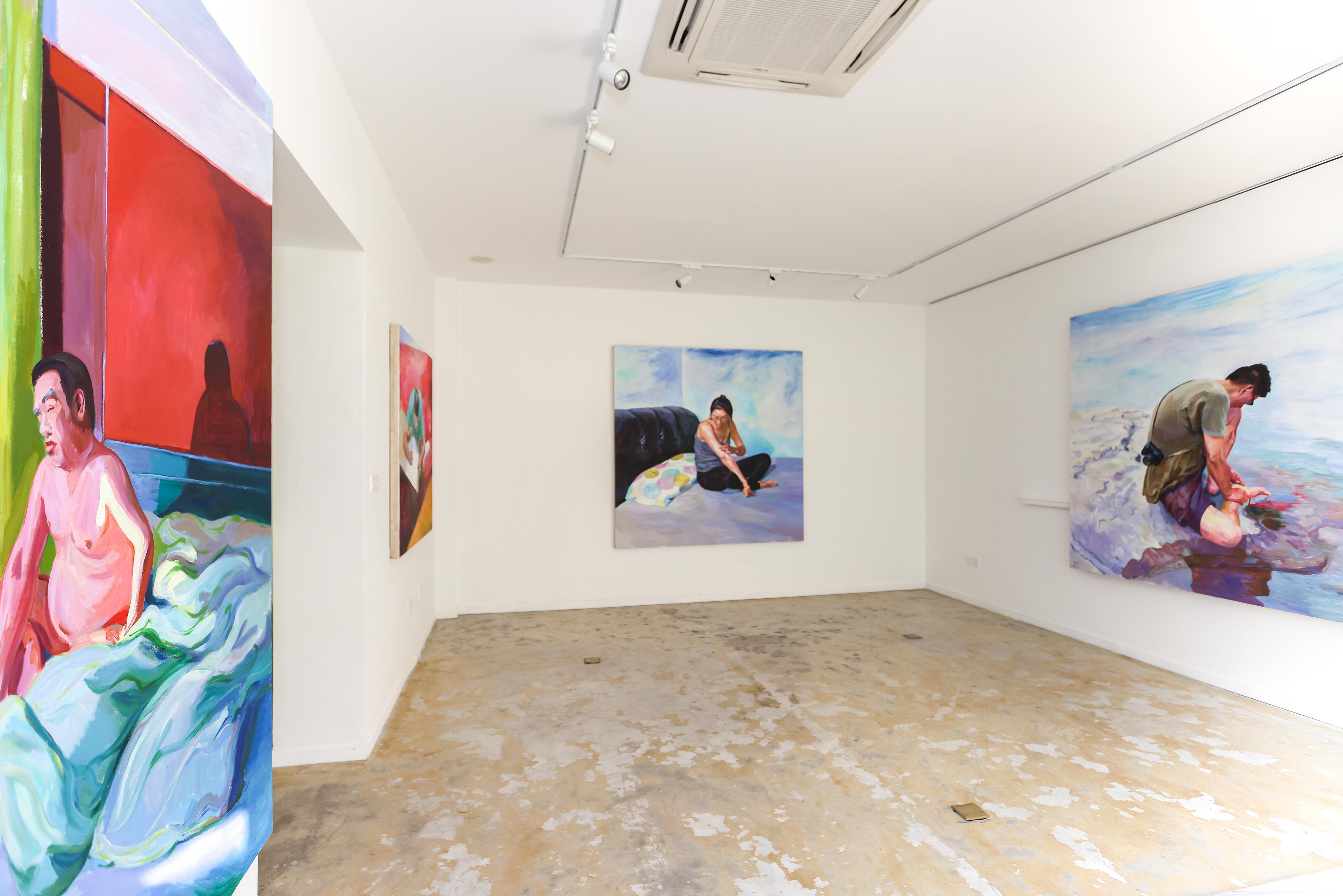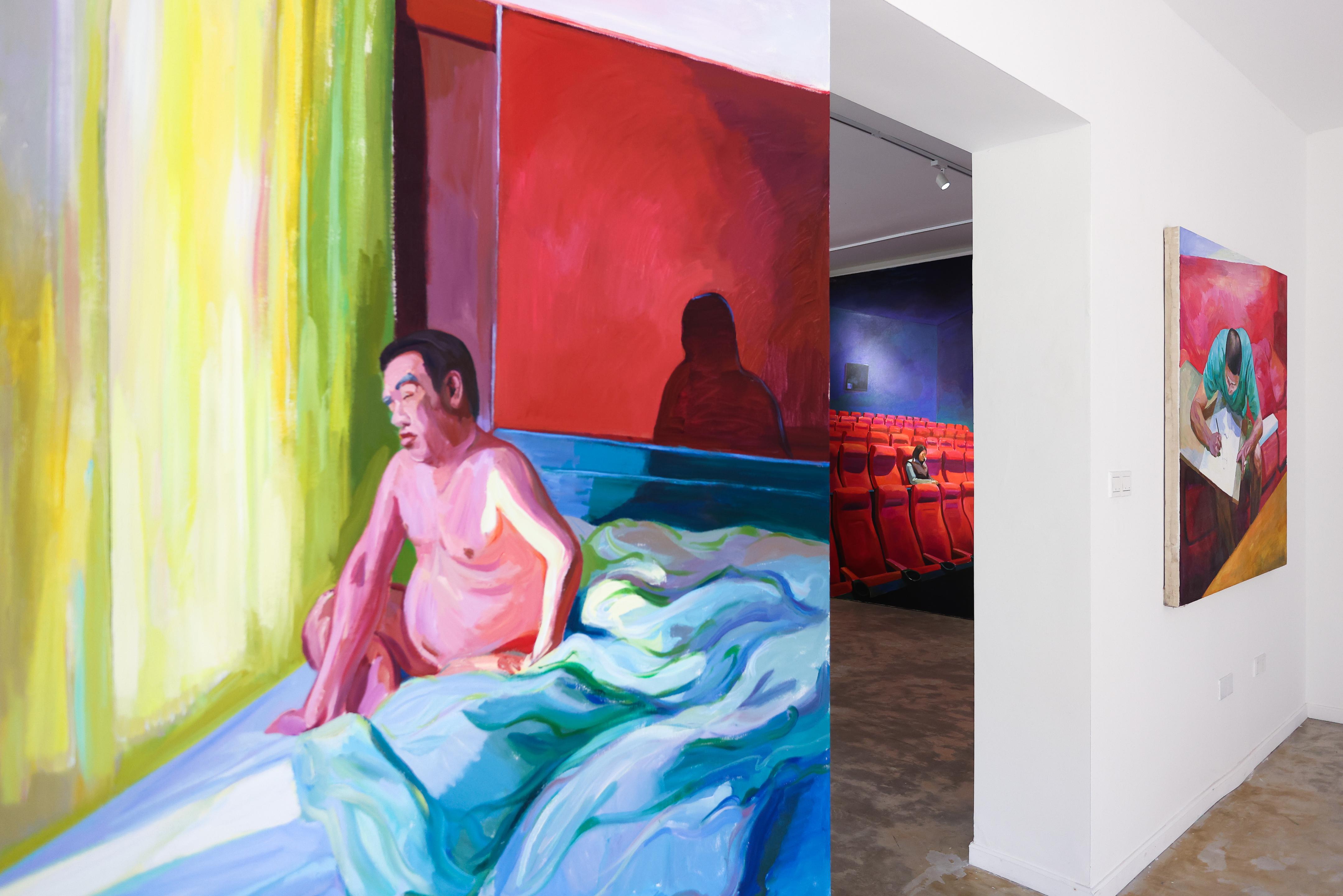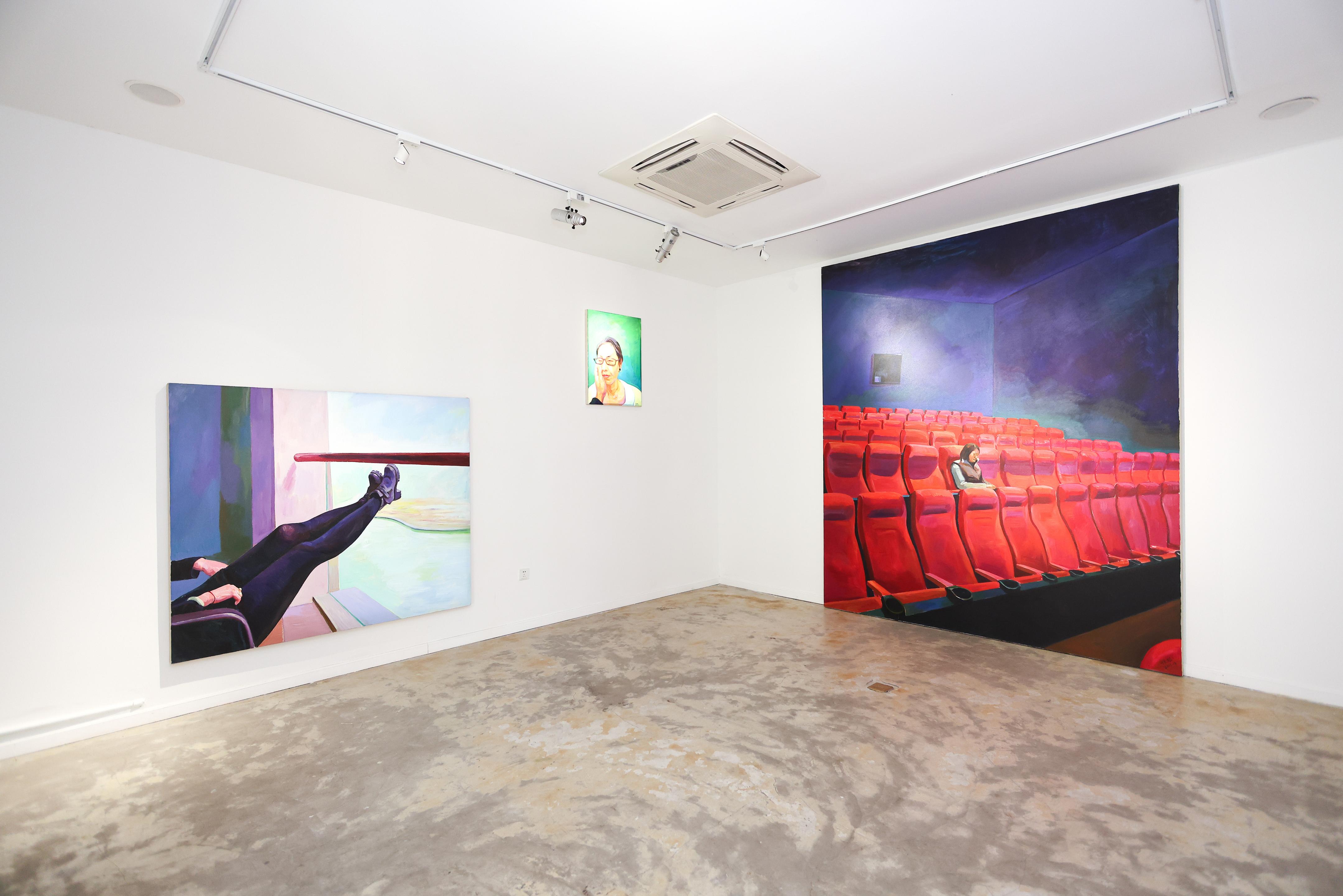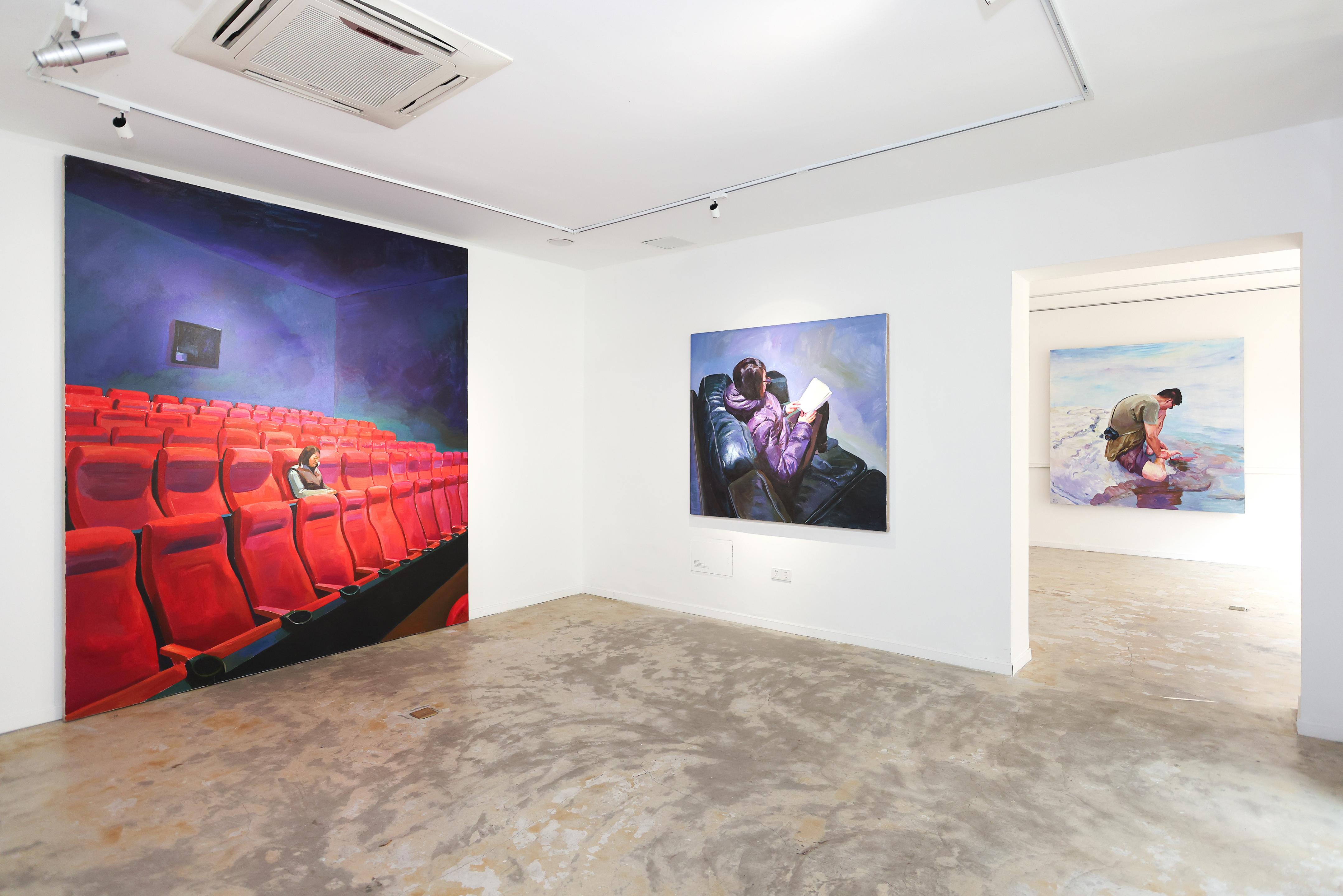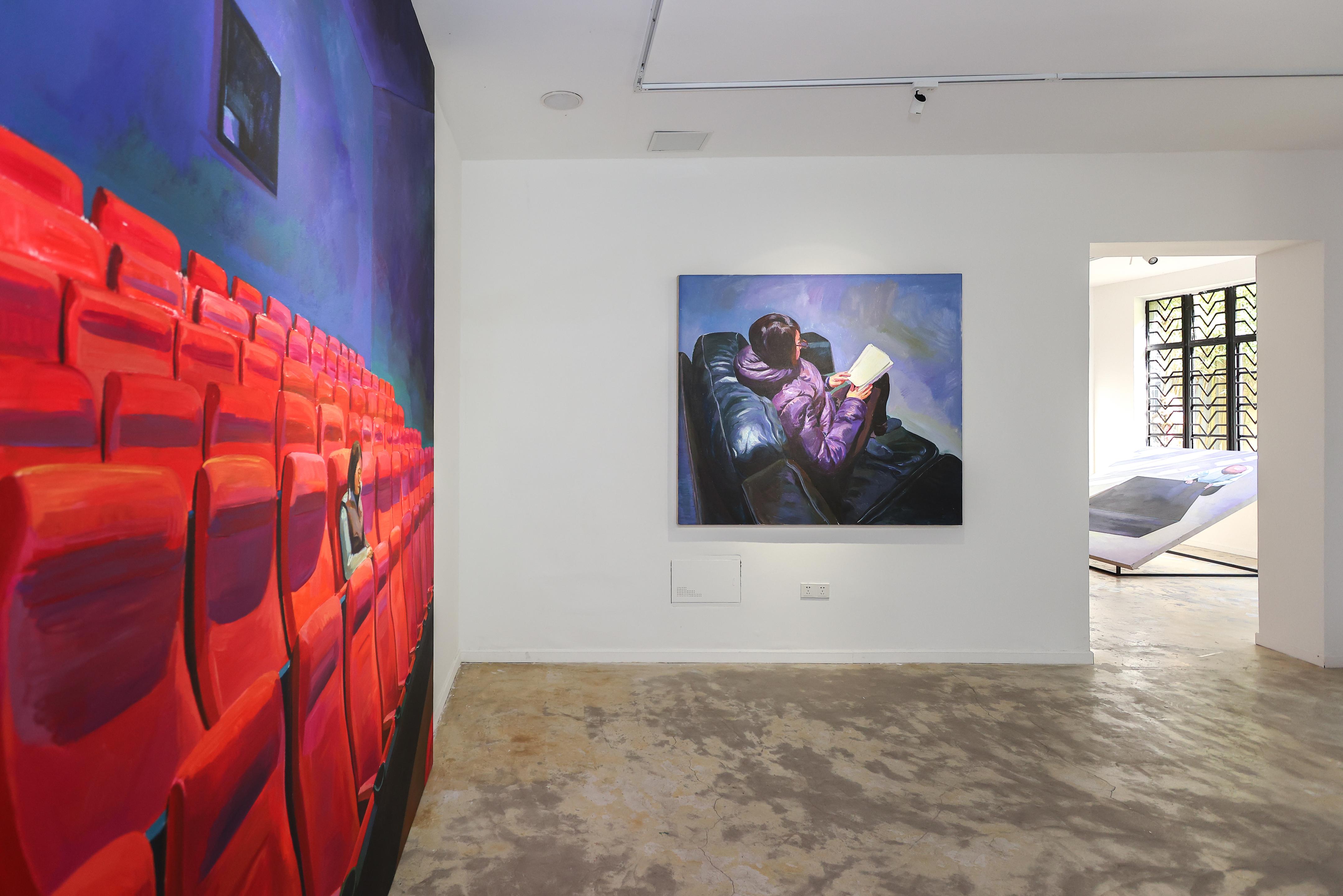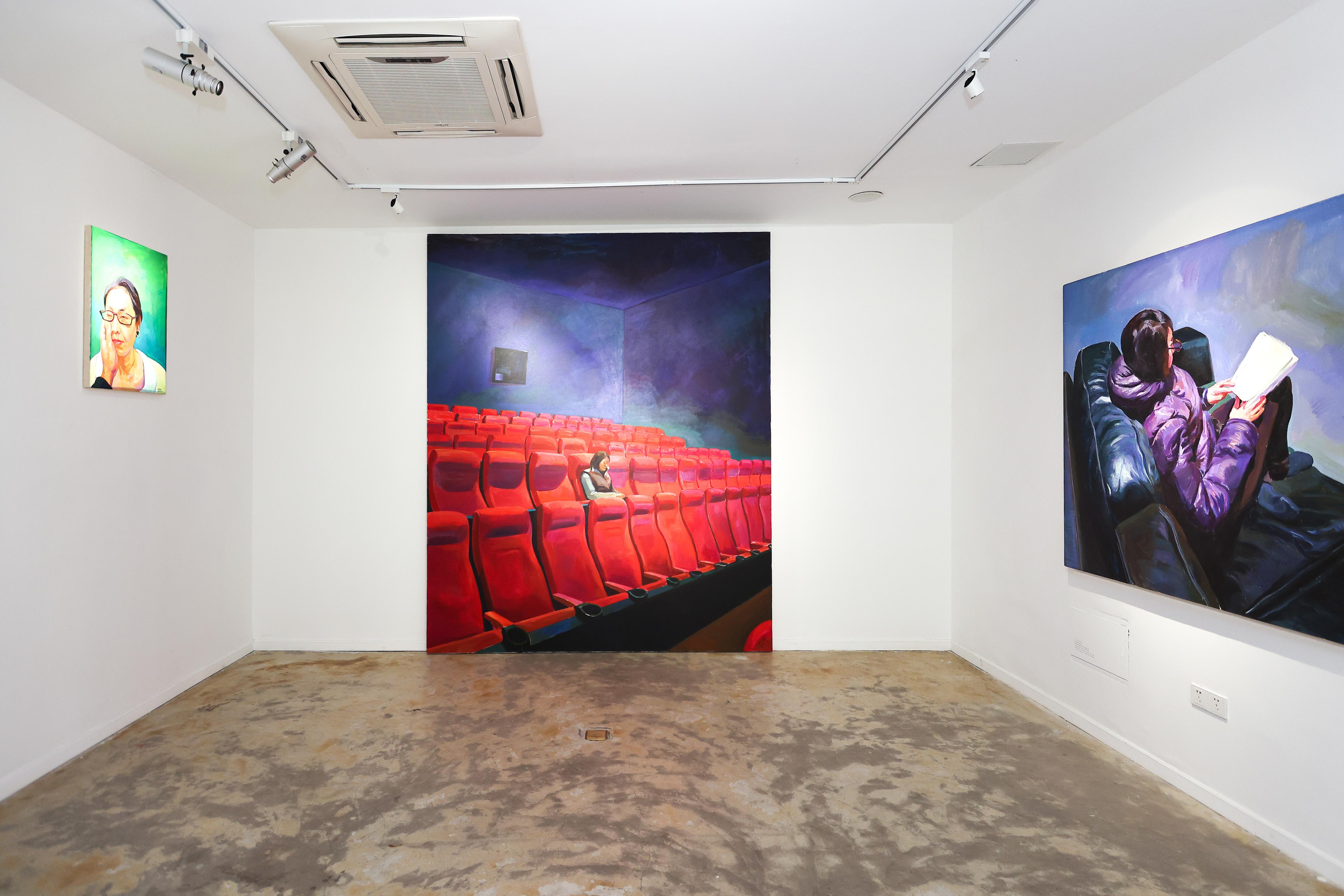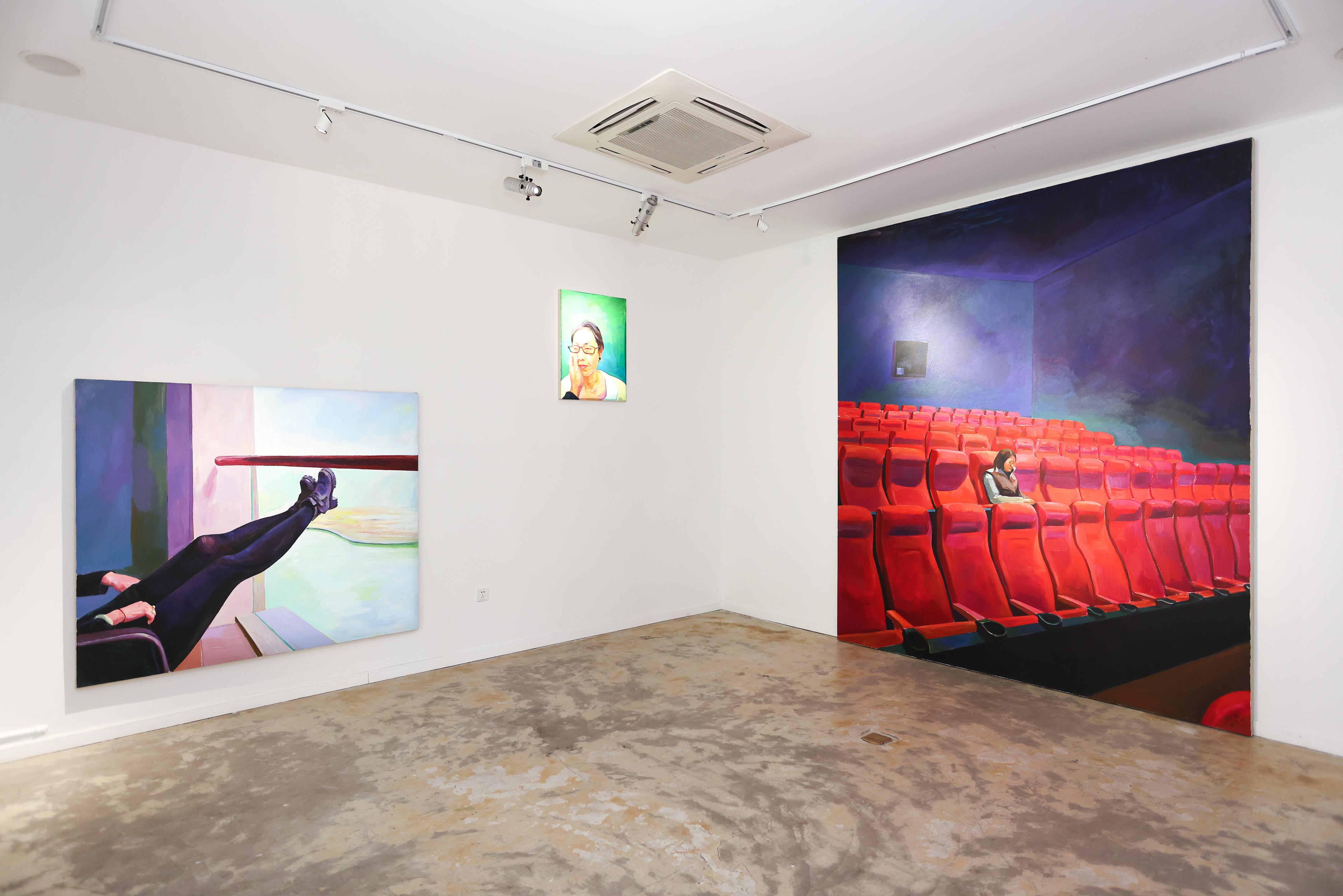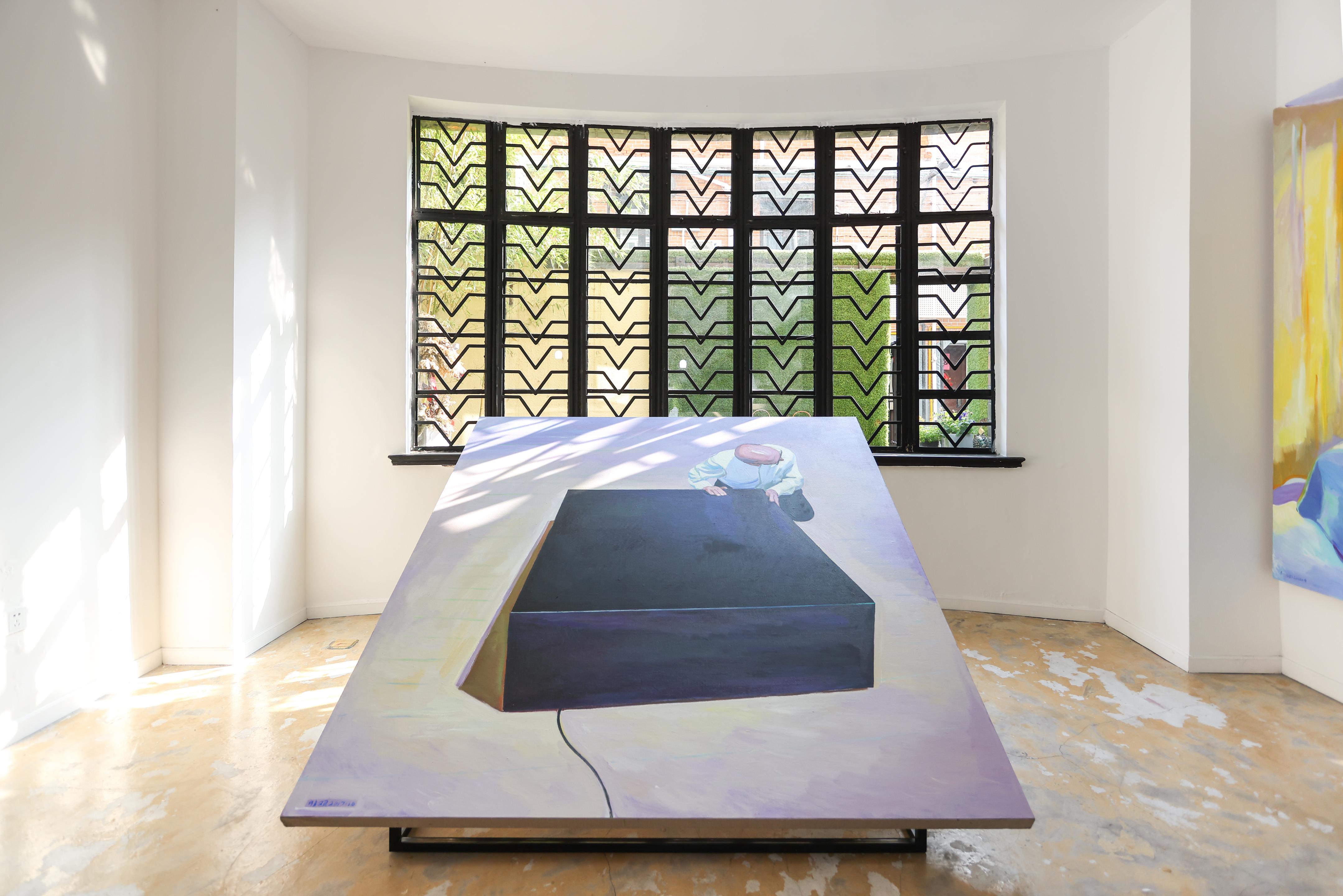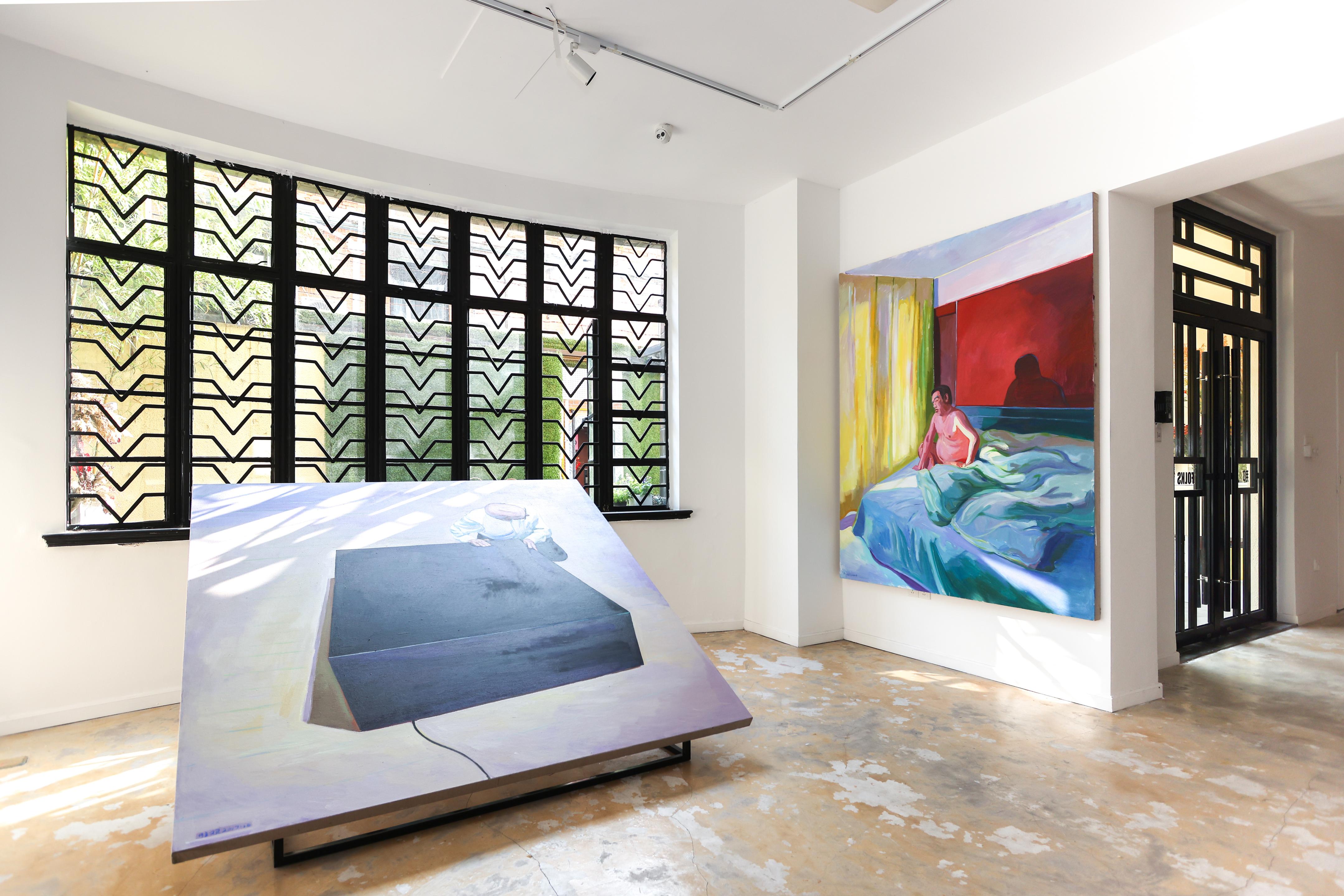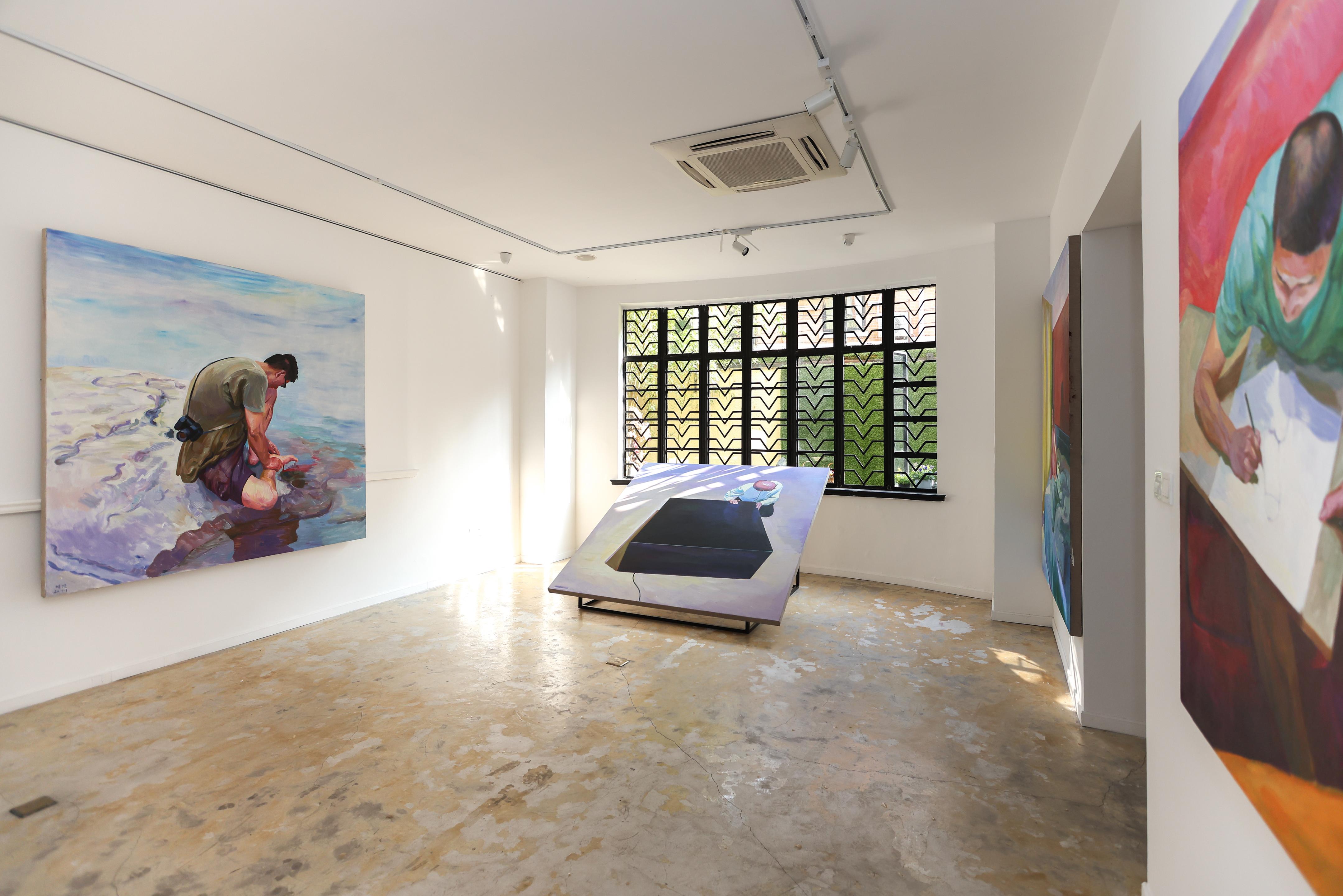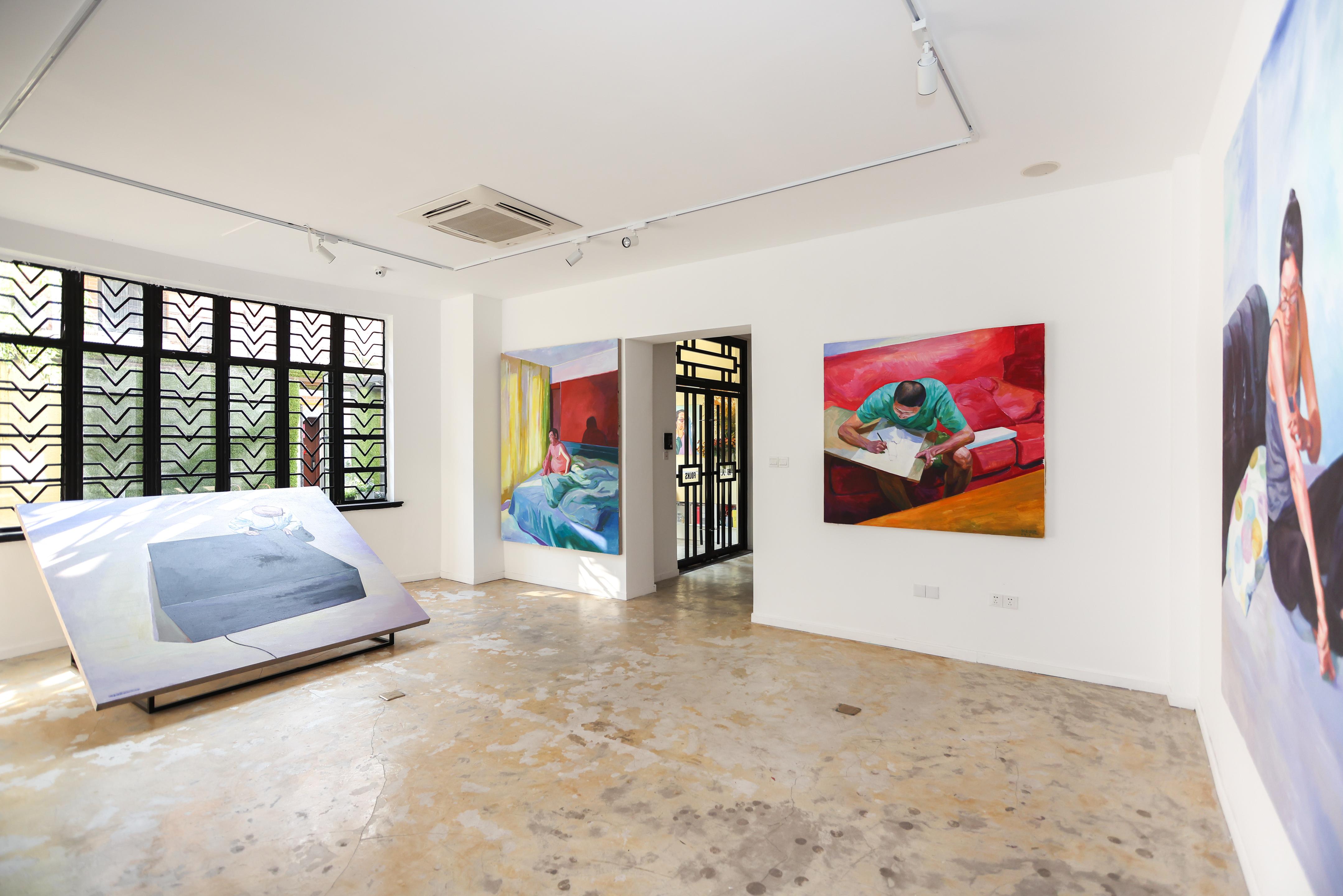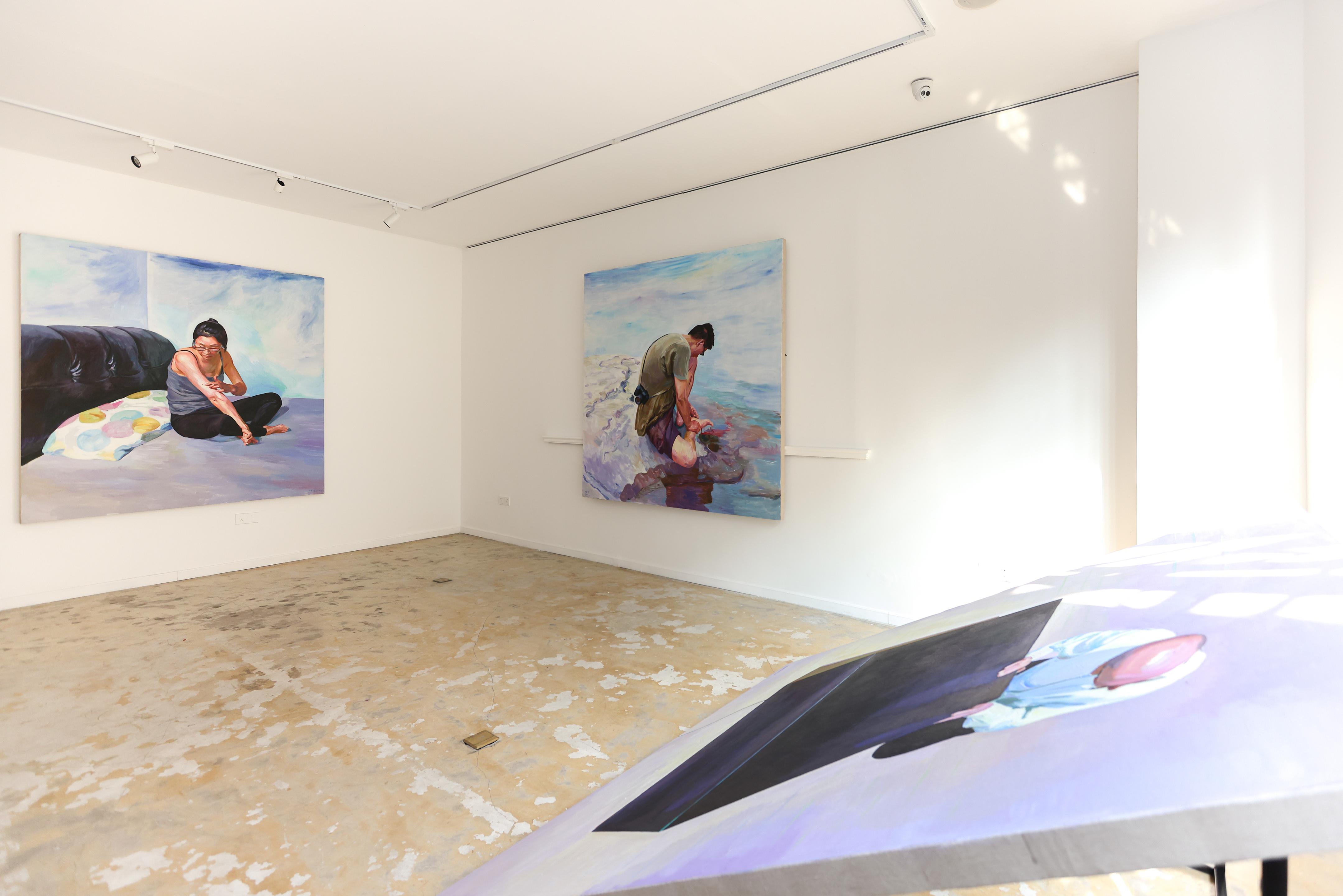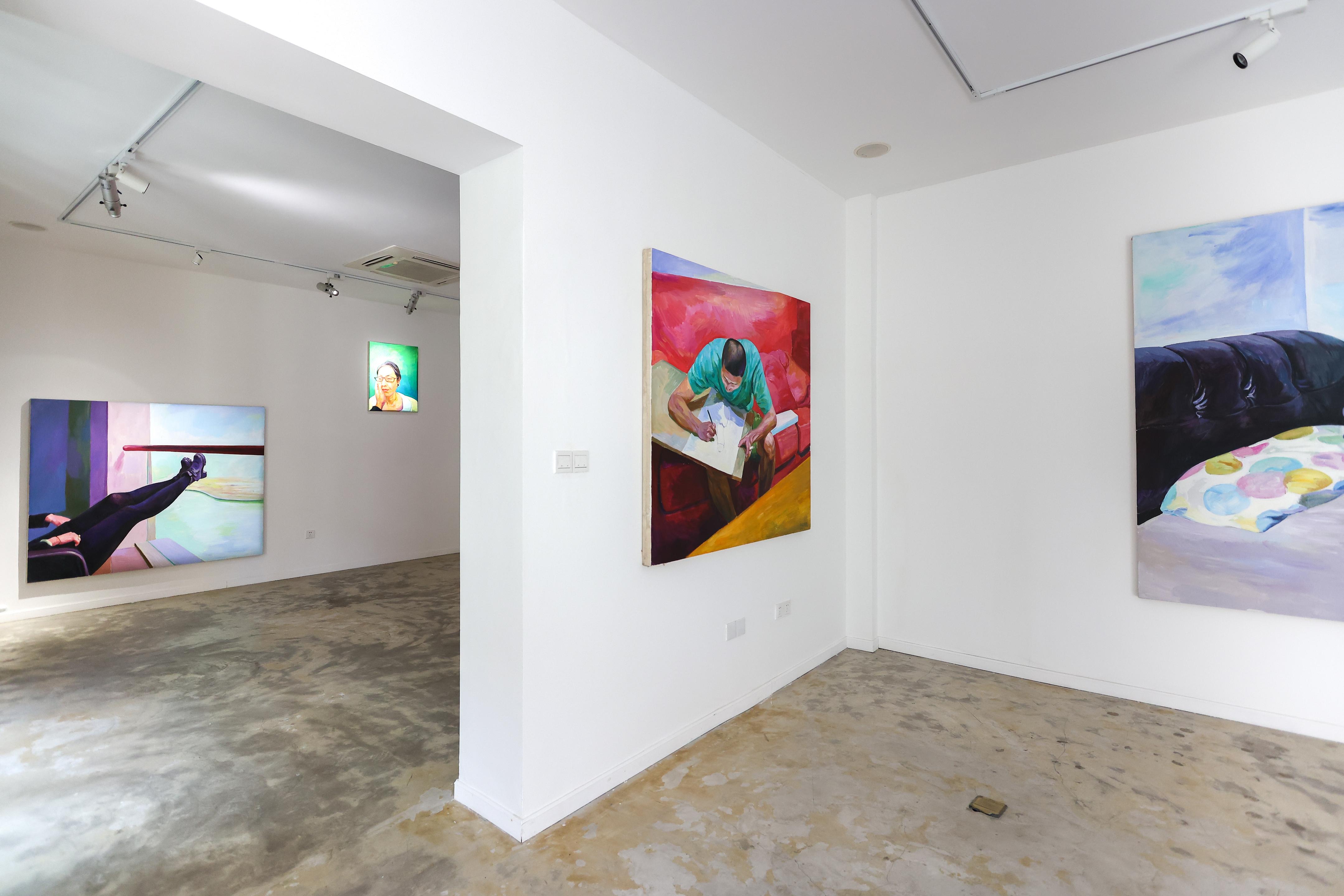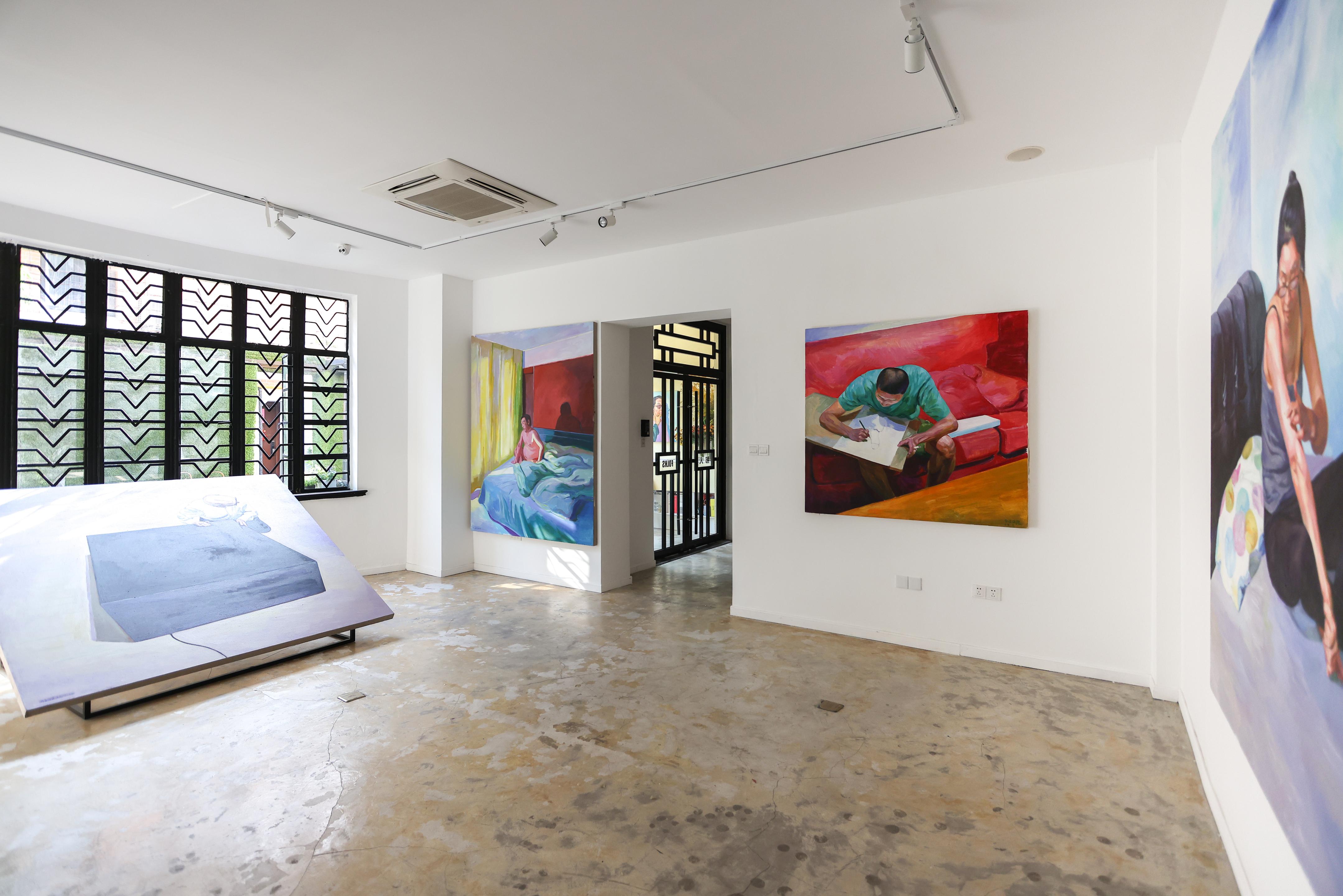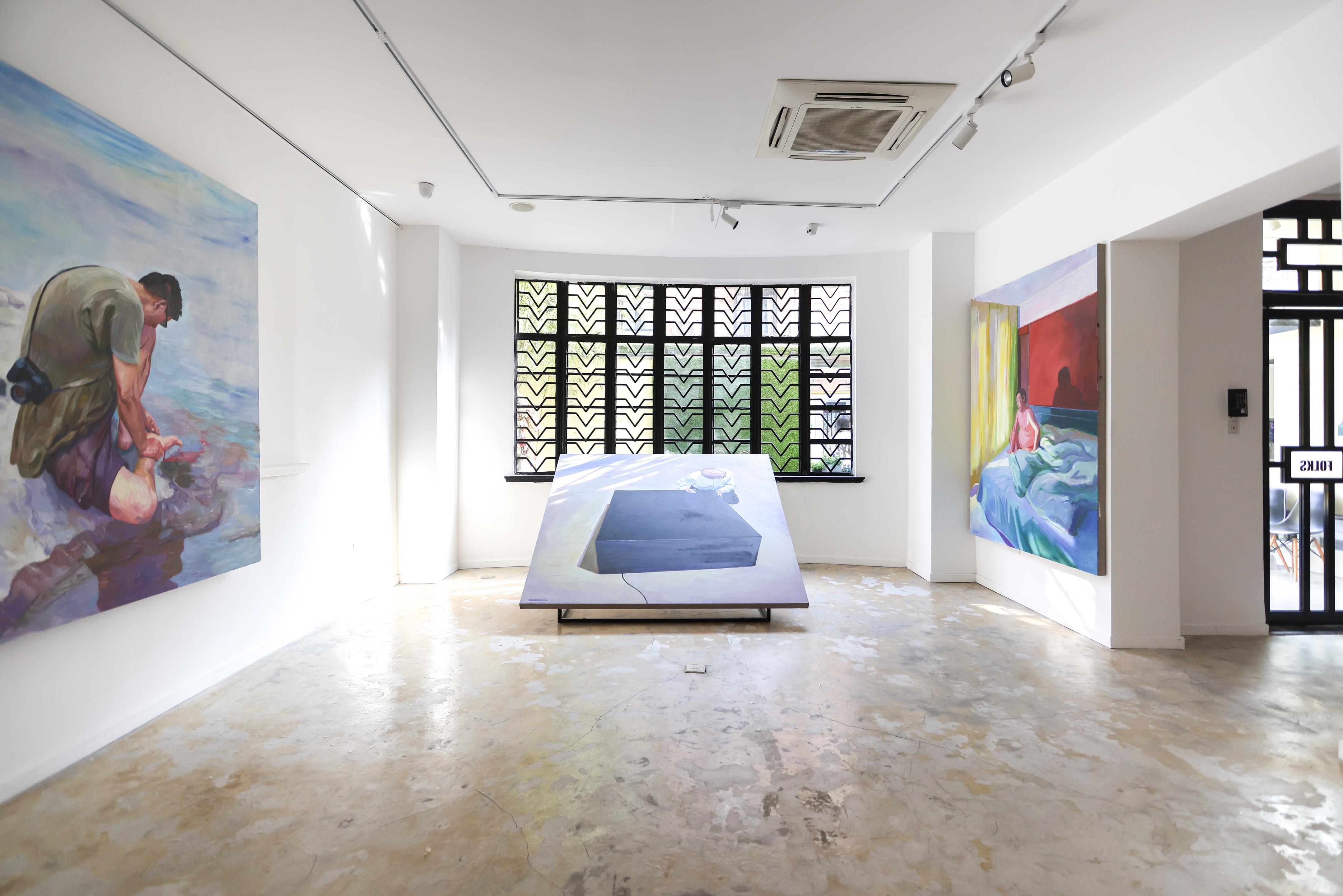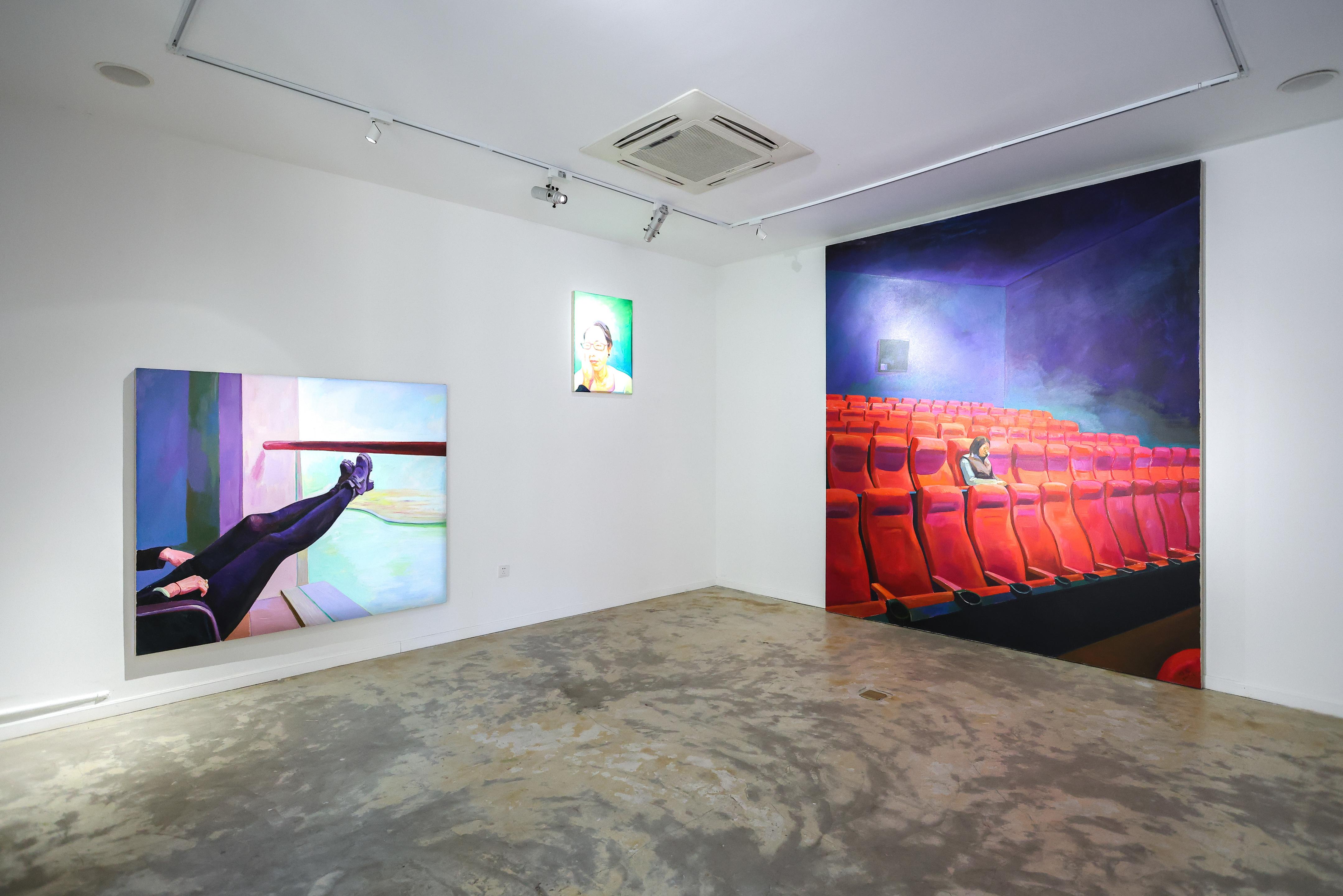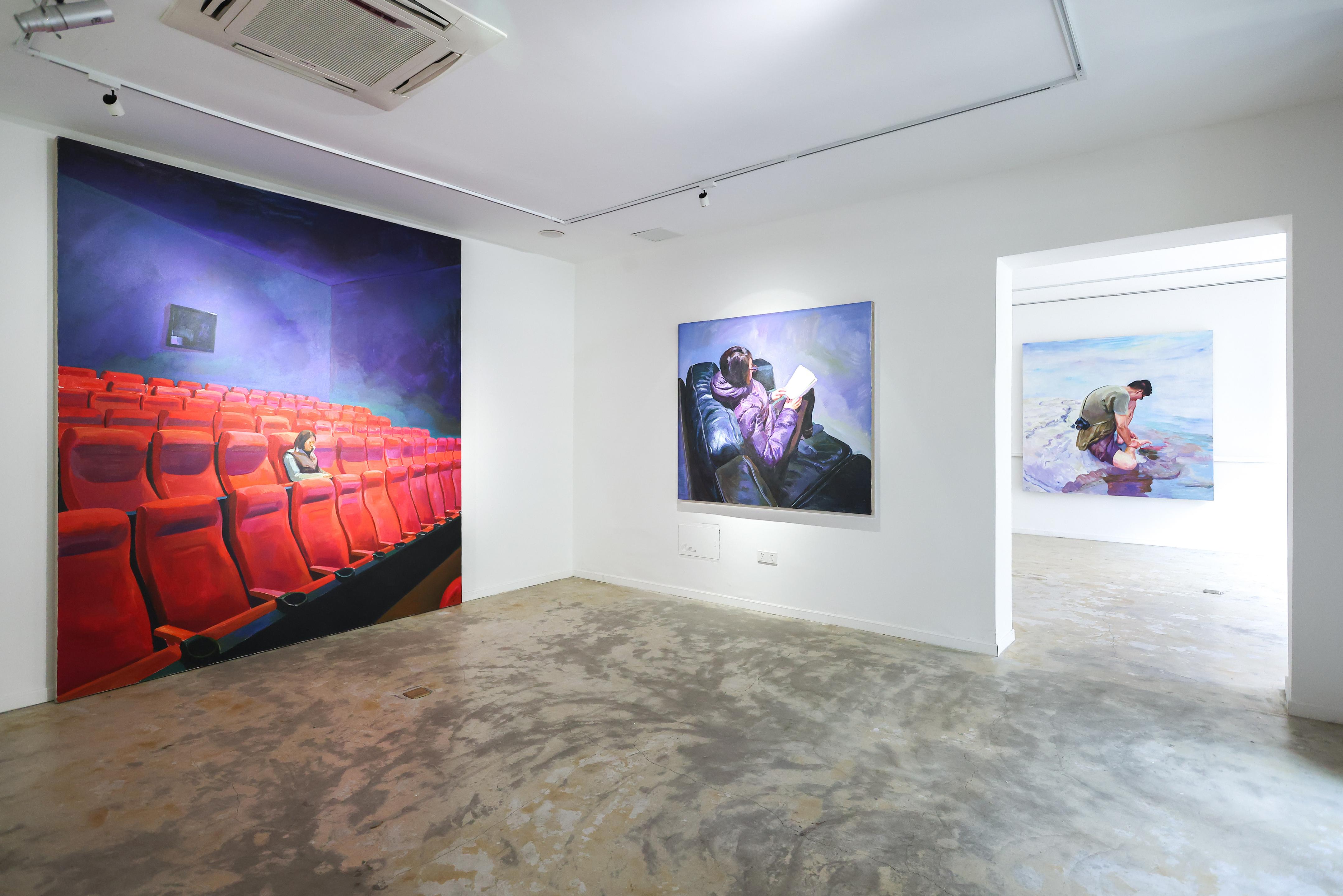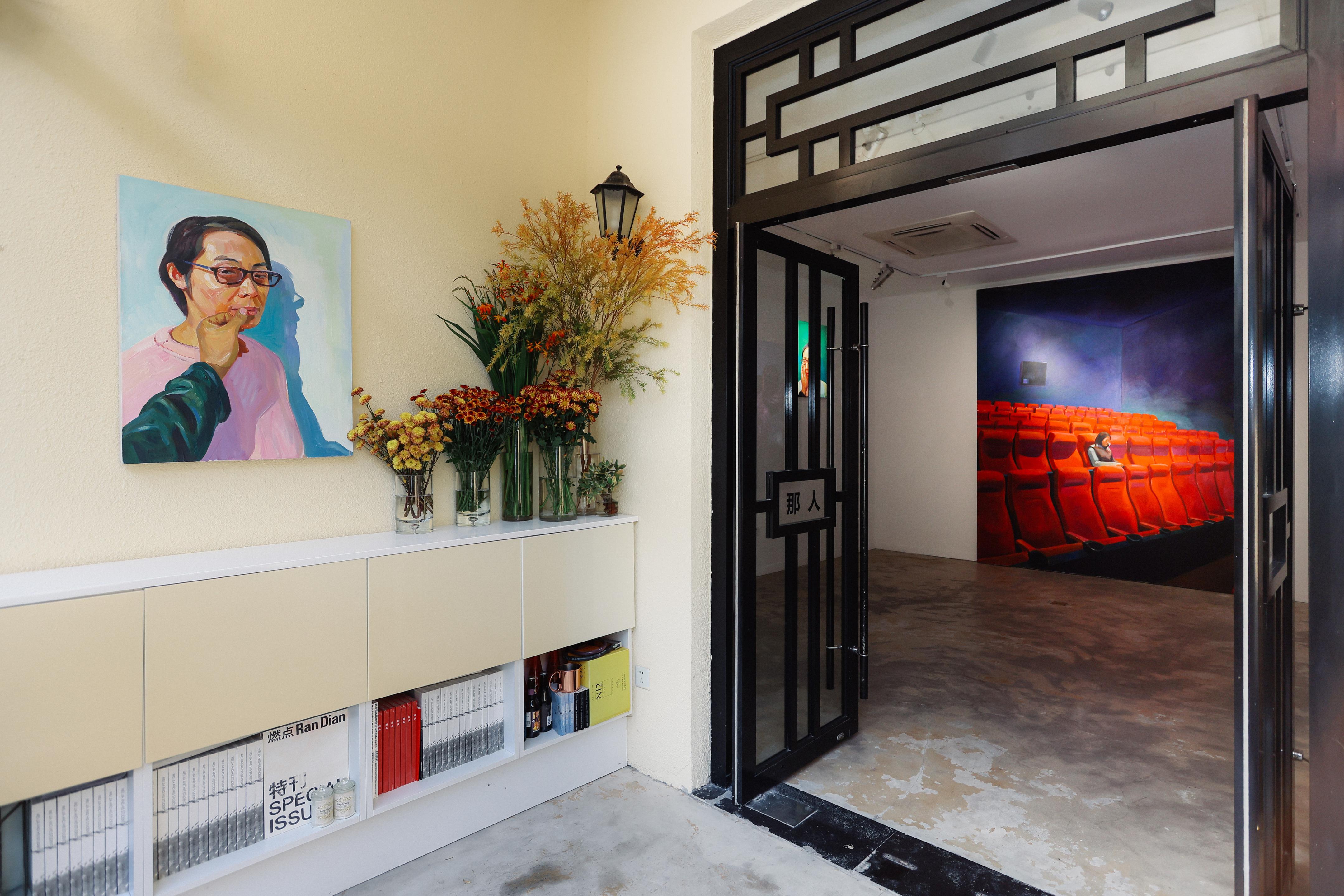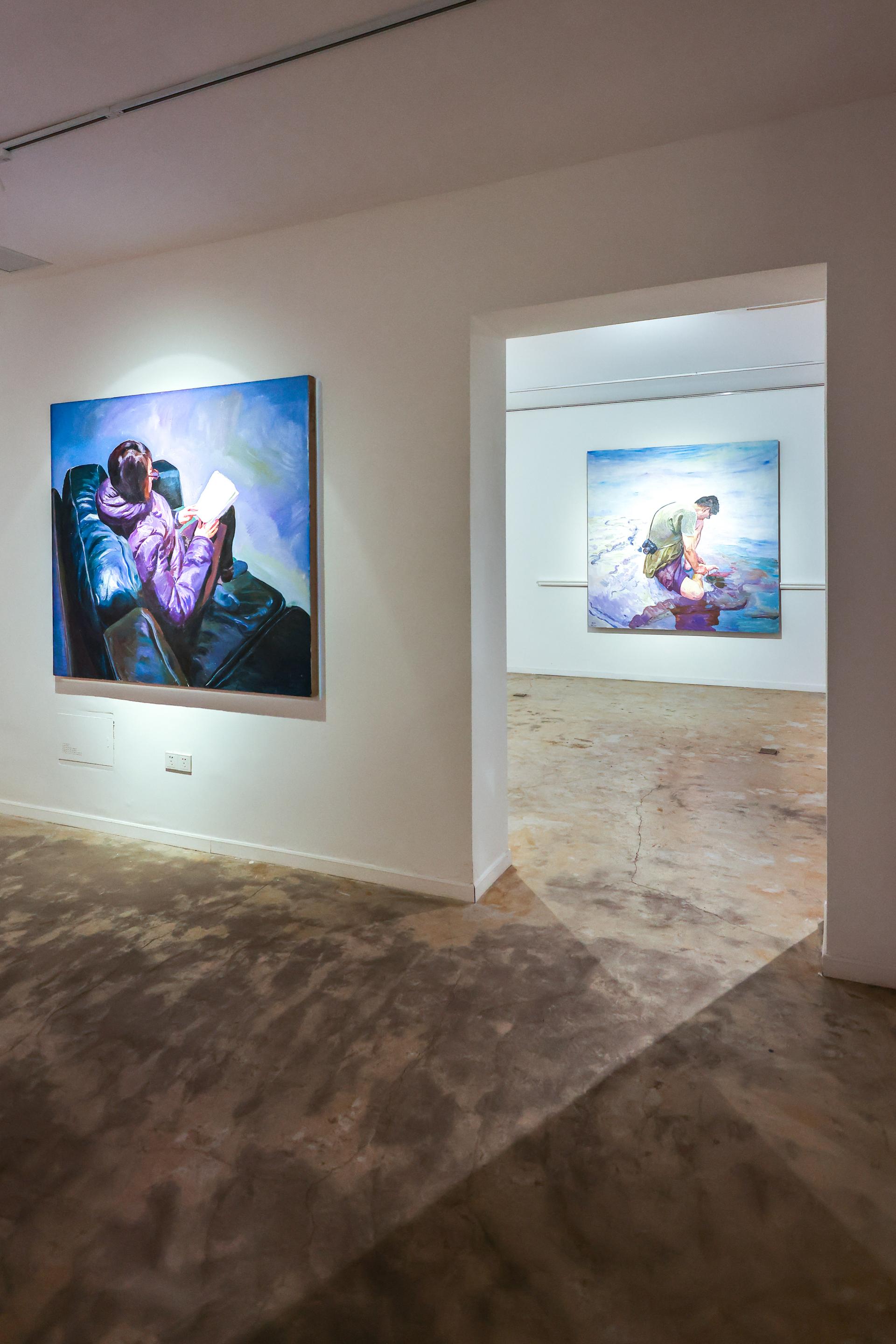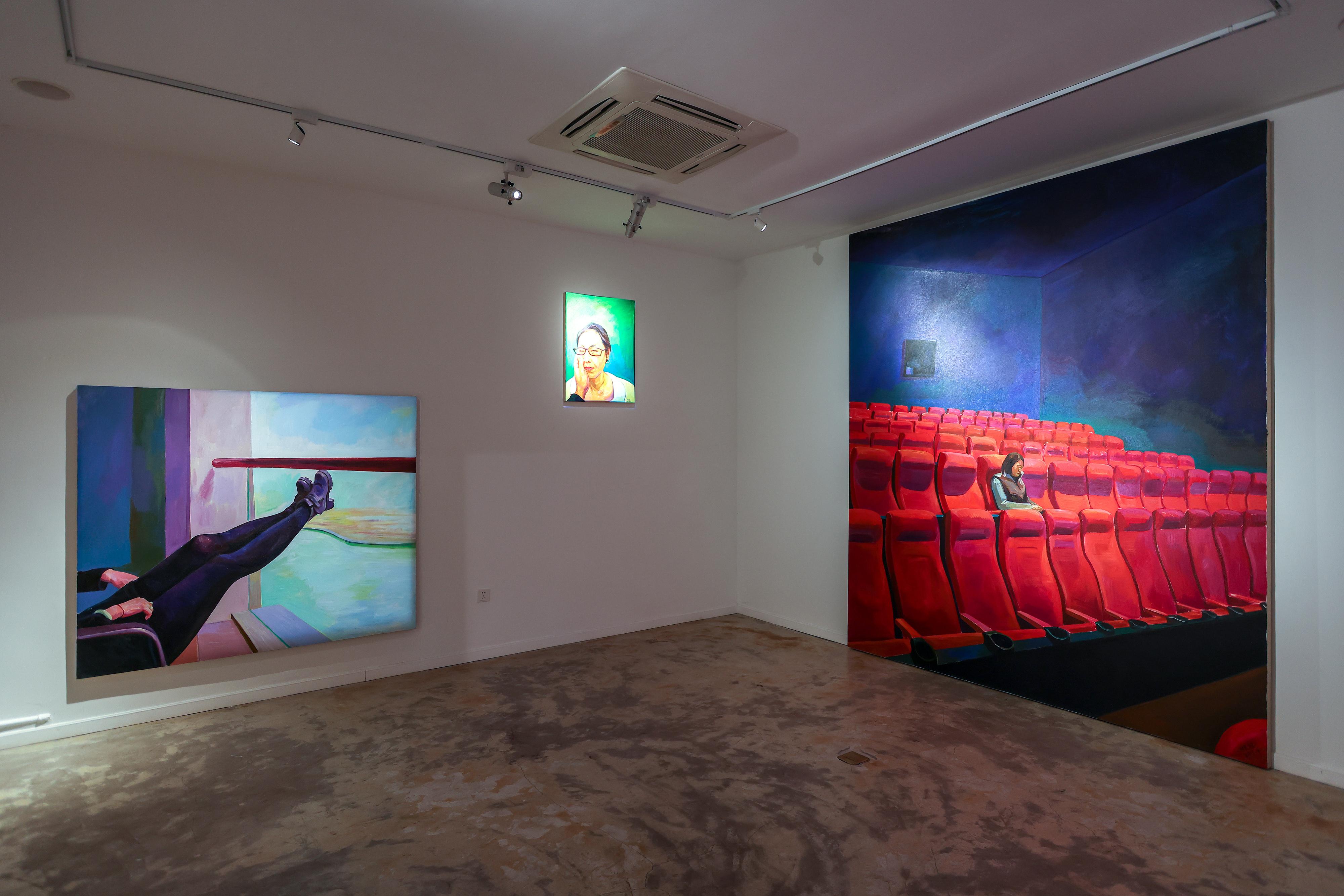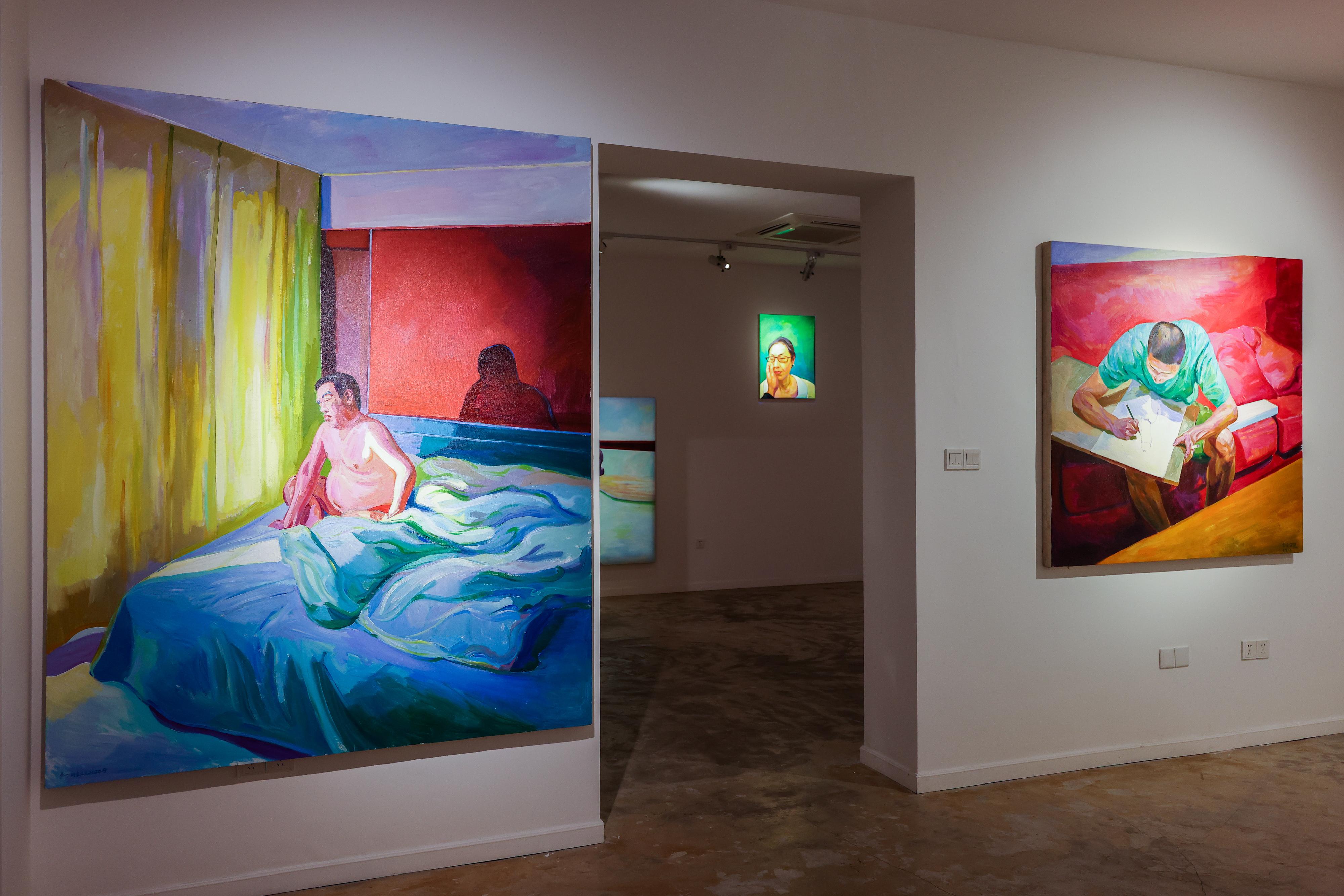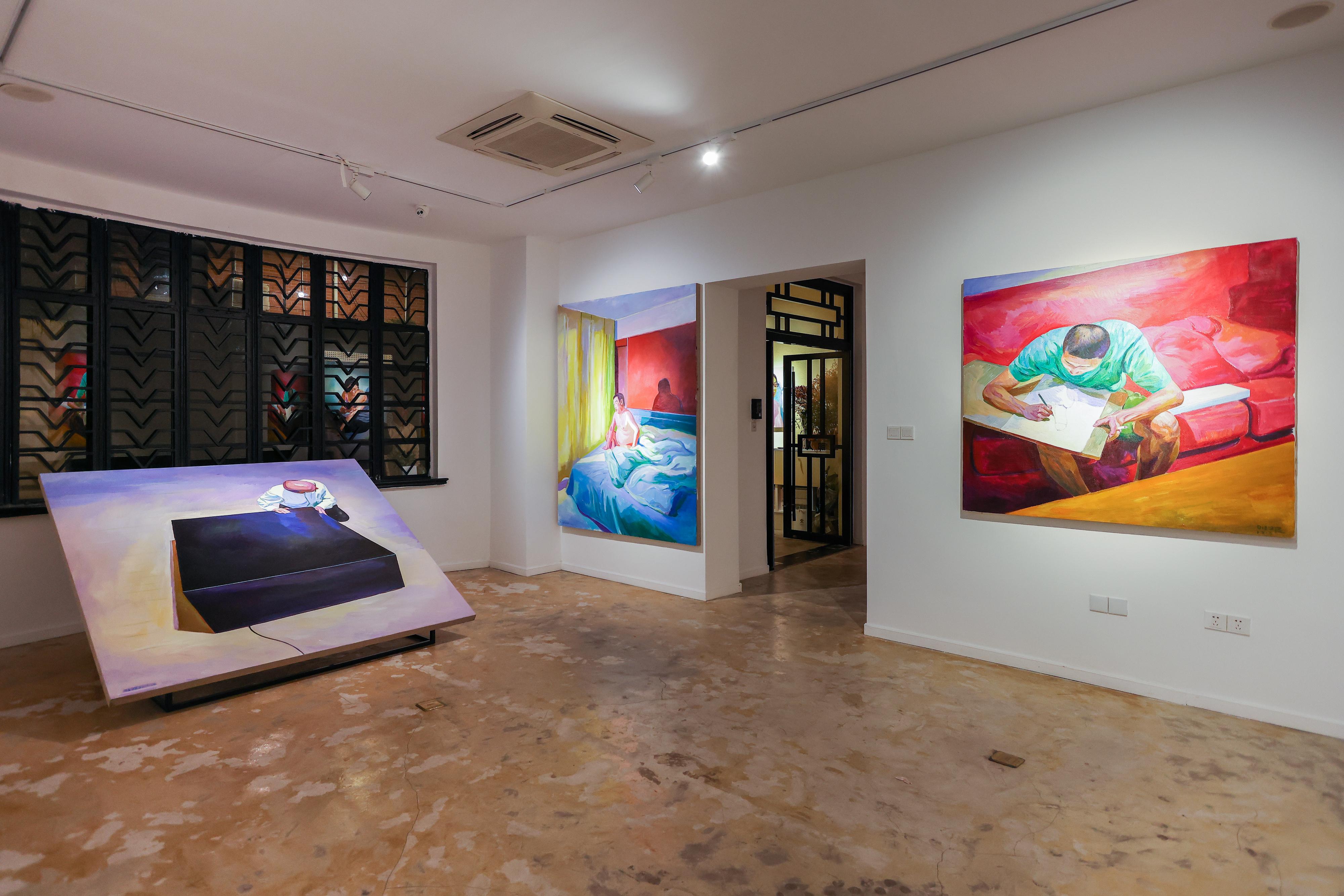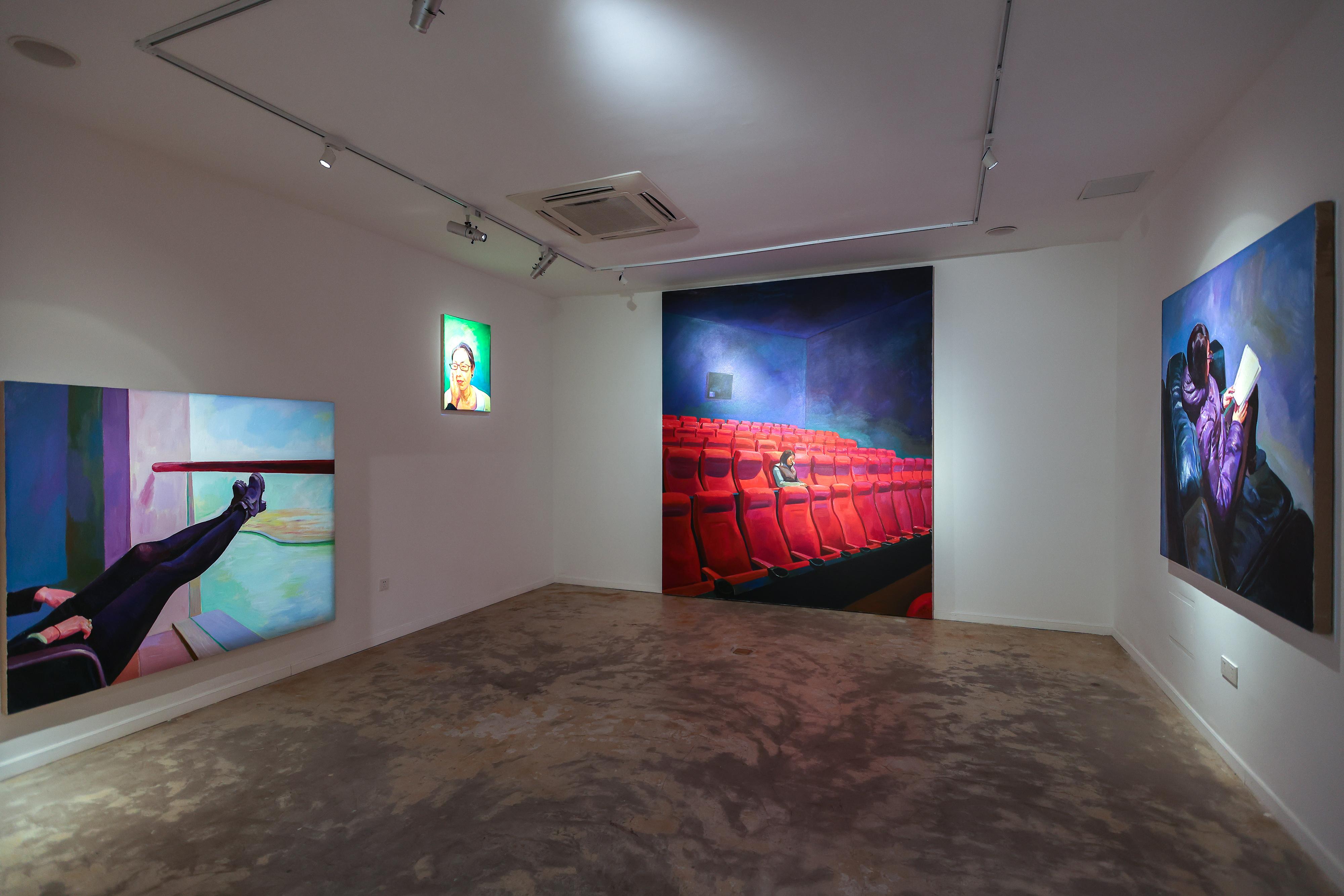In its latest exhibition 166 Art Space is proud to debut portraiture works by the acclaimed Shanghai based artist Liu Wei Jian. This never before displayed series represents a departure from Liu’s iconic oeuvre of land and city scapes. The works, developed over the past decade, began as a means for the artist to clear his mind during the course of intermittent “blockages” in the development of his more traditional subject matter. After strong growth in both scale and maturity, the artist has finally agreed to display a selection of these remarkable works to the public for the first time.
Painted mostly from memory, Liu’s portraits focus on family, friends and the artist himself. The Artist’s paintings have long been distinguished by the exaggerated color palette in which they are cast. This almost surreal universe of color is so masterfully balanced that it draws the viewer into the canvas prompting an almost immediate disregard for its departure from empiricism. The portraiture series relies as well on the artist’s brilliant application of color but substitutes the structural complexity of his scapes with a challenging placement of the subject. Rarely do these works approach the formal structure of portraits of the lowlands or Northern renaissance. The artist draws his compositional inspiration instead from a broad selection of figurative painters with a more open approach - from Caravaggio to Bonnard - from Fischl to Freud.
A hallmark of Liu’s work is a tense anthropomorphic energy extant in the canvas between the objects represented. Bushes and trees seem to be reaching out to park benches, buildings struggle to caress passing freight trucks. This tension is present in the artist’s portraiture as well but with each canvas addressing only a single figure, it is less a matter of the counter positioning of objects than of Liu’s contrasting attitude towards the subject itself. In the largest canvas in the exhibition, Liu places his wife alone in the vastness of an empty theatre. Ensconced in the comfort of a soft chair, clad in a warm coat she is both safe and forlorn - caught up in her own thoughts - eyes cast away from a performance of unknown content. In a self portrait in bed the artist is unflatteringly paunchy while at the same time proud and resplendent in the morning light.
Liu’s portraits are tender and loving - these are, after all, paintings of people with whom he is closest. They are at the same time brutal and unapologetic. Figures tend to wounds or bend to Sisyphian tasks but are never abandoned as cautionary tales. There always remains hope and affection buoyed by ever present resplendent color. While not before displayed, these canvases fit seemlessly into the Artists profound body of work opening up yet another channel for his broad contribution to the language of painting.
(Text by Andrew Ruff)
本次展览呈现的是艺术家刘唯艰从未公开展示过的人物肖像画。过去十几年来,刘唯艰在以描绘现实风景为主体创作的同时,一直不间断地画着肖像画。这些画的主角经常是艺术家最亲近的人:他的妻子、妻子的表妹、他的朋友、艺术家同事… 甚至包括艺术家自己。许多时候,这些画面上的人并没有被邀请作为模特,在艺术家的工作室里端坐着等待被画,而是艺术家在与他们擦肩而过的邂逅或是蓦然回首的注视时,这些形象所处的环境,他们的动作姿态,或专注或走神,或极度平凡,或甚是离奇… 无论怎样,一定是在那一刻,在那个境况中,艺术家被他们身上散发的某种气息或情绪所吸引,以至于他必须通过用颜料将他们留在记忆中的感知和痕迹还原在画布上的过程,方能释怀。
那么,是什么吸引了刘唯艰,让他在描绘道路、楼房、水池、路灯的同时,转身去画极少在他的风景画中出现的人物呢?2018年的作品《一场电影》描绘了一个独坐在电影院中的女人,她是艺术家的妻子。透过一排排深红色的座椅和周围蓝紫色的墙壁在超大画面上的组合,陷入影院座椅内沉思的女人同时被温暖和孤单包裹着,让我们禁不住好奇她看了什么电影?为什么一个人来看电影?她在感伤自己?抑或是在忧伤他人?2020年的作品《一个中年男子的早晨》是刘唯艰的一张自画像,画面上处在半梦半醒中的艺术家将他业已发福的身体暴露在我们面前。强烈的阳光打在屋内明黄的窗帘上,艺术家的影子投射在身后红色的背板上。一个中年人的早晨醒来后的困顿近乎要沿着床沿流淌出画面。人生的意义?醒来的动力?仿佛我们都在等待着窗帘拉开的刹那,照进现实里的光来指点迷津。刘唯艰的人物画中充满了这样点燃、照亮和凝神的时刻,如同浓缩的人生泡腾片,投入生活的海洋后翻腾着溶开散去。这就是刘唯艰需要通过描绘人物释放的情愫。
艺术史上钟爱画身边亲人的艺术家有很多,卢西安·弗洛伊德(Lucian Freud)将妻子、情人、儿女都用粗硬的笔刷,稠厚的颜料塑造在画布上。对人物关系的着迷是激发卢西安·弗洛伊德绘画旅程的出发点,就如同他著名的祖父西格蒙德·弗洛伊德(Sigmund Freud)用精神分析的方式描绘人类内心一样,卢西安·弗洛伊德用强化现实的人物绘画逼近人类内心的感知。刘唯艰也找到了在画面中强化现实的方式,这也是他在创作风景画中逐渐摸索出来并一贯沿用的方法:强烈的光线,饱和的颜色对比和比真人更大的画幅。
面对入画的熟人和亲人,刘唯艰显然不是一名窥视者,而更是一名观察者。“以我观物,故物我皆著我之色彩。” 在刘唯艰画中突出的颜色和光成为他作为观察者身上隐形的迷彩服,让他能够最大程度地接近无意识状态中人的内心真相。“蓦然回首,那人却在灯火阑珊处。” 王国维在《人间词话》中的境界说,岂不也是刘唯艰通过绘画抵达心灵感受的第三种境界?
文字:王凯梅

